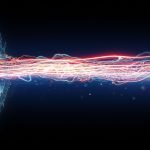Psychedelic Research and Functional Neurological Disorders
In a recent article from John Hopkins, psychedelic research was referred to in a very supportive light, and continued research was advocated.1 Clinical studies on the use of psychedelics with psychotherapy for treating anxiety, addiction, depression, and inflammatory diseases were mentioned. It does seem that study of the use of serotonergic psychedelics (5-HT agonists) agents in clinical practice will continue.
Research Report on 5-HT Agonists
Last month a research report on the use of 5-HT agonists as a novel treatment for functional neurological disorders (FNDs) was published.2 FNDs are defined by the appearance of neurological symptoms without underlying structural pathology.3
Functional Neurological Disorders (FNDs)
The symptoms of these disorders can take on many varied forms, including hemiparesis, visual impairment, and movement disorders. FNDs have been referred to historical as hysterias, psychogenic movement disorders, and conversion disorders.
Because of serotonin’s extensive modulation of cortical function in the brain, it has been theorized that perhaps 5-HT receptor agonists, such as found in many psychedelic agents, would have an effect on FNDs. The activation of the 5-HT2A receptor promotes extensive neuronal excitability through increased action potential.2 This is thought to enhance synaptic input.
fMRI and EEG Studies
In fMRI and EEG studies it has been found that 5-HT2A agonists flatten the brain’s hierarchical topography.4 Specifically, lower-order sensori-motor and association cortex develop functional connectivity with higher-order cognitive processes.5 These findings are supportive of using 5-HT2a agonists in FNDs, since they help modulated 2 key processes: self-representation and higher-order cognitive processes upon lower-order sensori-motor function. In other words, networks that are subservient to self-related cognition are altered in a way which allows for ego dissolution, which is anticipated to weaken an abnormal somatic representation that underlies functional symptoms.
Sources
- Nichols DE, Johnson MW, Nichols CD. Psychedelics as Medicines: An Emerging New Paradigm. Clin Pharmacol Ther. 2017;101(2):209-219.
- American Psychiatric Association (2013) Diagnostic and statistical manual of mental disorders, 5th Edition. Arlington, VA: American Psychiatric Association
- Bryson A, Carter O, Norman T, Kanaan R. 5-HT2A Agonists: A Novel Therapy for Functional Neurological Disorders?. Int J Neuropsychopharmacol. 2017;20(5):422-427.
- Petri G, Expert P, Turkheimer F, et al. Homological scaffolds of brain functional networks. J R Soc Interface. 2014;11(101):20140873.
- Kometer M, Schmidt A, Jäncke L, Vollenweider FX. Activation of serotonin 2A receptors underlies the psilocybin-induced effects on α oscillations, N170 visual-evoked potentials, and visual hallucinations. J Neurosci. 2013;33(25):10544-51.
 Node Smith, associate editor for NDNR, is a fifth year naturopathic medical student at NUNM, where he has been instrumental in maintaining a firm connection to the philosophy and heritage of naturopathic medicine amongst the next generation of docs. He helped found the first multi-generational experiential retreat, which brings elders, alumni, and students together for a weekend campout where naturopathic medicine and medical philosophy are experienced in nature. Three years ago he helped found the non-profit, Association for Naturopathic ReVitalization (ANR), for which he serves as the board chairman. ANR has a mission to inspire health practitioners to embody the naturopathic principles through experiential education. Node also has a firm belief that the next era of naturopathic medicine will see a resurgence of in-patient facilities which use fasting, earthing, hydrotherapy and homeopathy to bring people back from chronic diseases of modern living; he is involved in numerous conversations and projects to bring about this vision.
Node Smith, associate editor for NDNR, is a fifth year naturopathic medical student at NUNM, where he has been instrumental in maintaining a firm connection to the philosophy and heritage of naturopathic medicine amongst the next generation of docs. He helped found the first multi-generational experiential retreat, which brings elders, alumni, and students together for a weekend campout where naturopathic medicine and medical philosophy are experienced in nature. Three years ago he helped found the non-profit, Association for Naturopathic ReVitalization (ANR), for which he serves as the board chairman. ANR has a mission to inspire health practitioners to embody the naturopathic principles through experiential education. Node also has a firm belief that the next era of naturopathic medicine will see a resurgence of in-patient facilities which use fasting, earthing, hydrotherapy and homeopathy to bring people back from chronic diseases of modern living; he is involved in numerous conversations and projects to bring about this vision.










